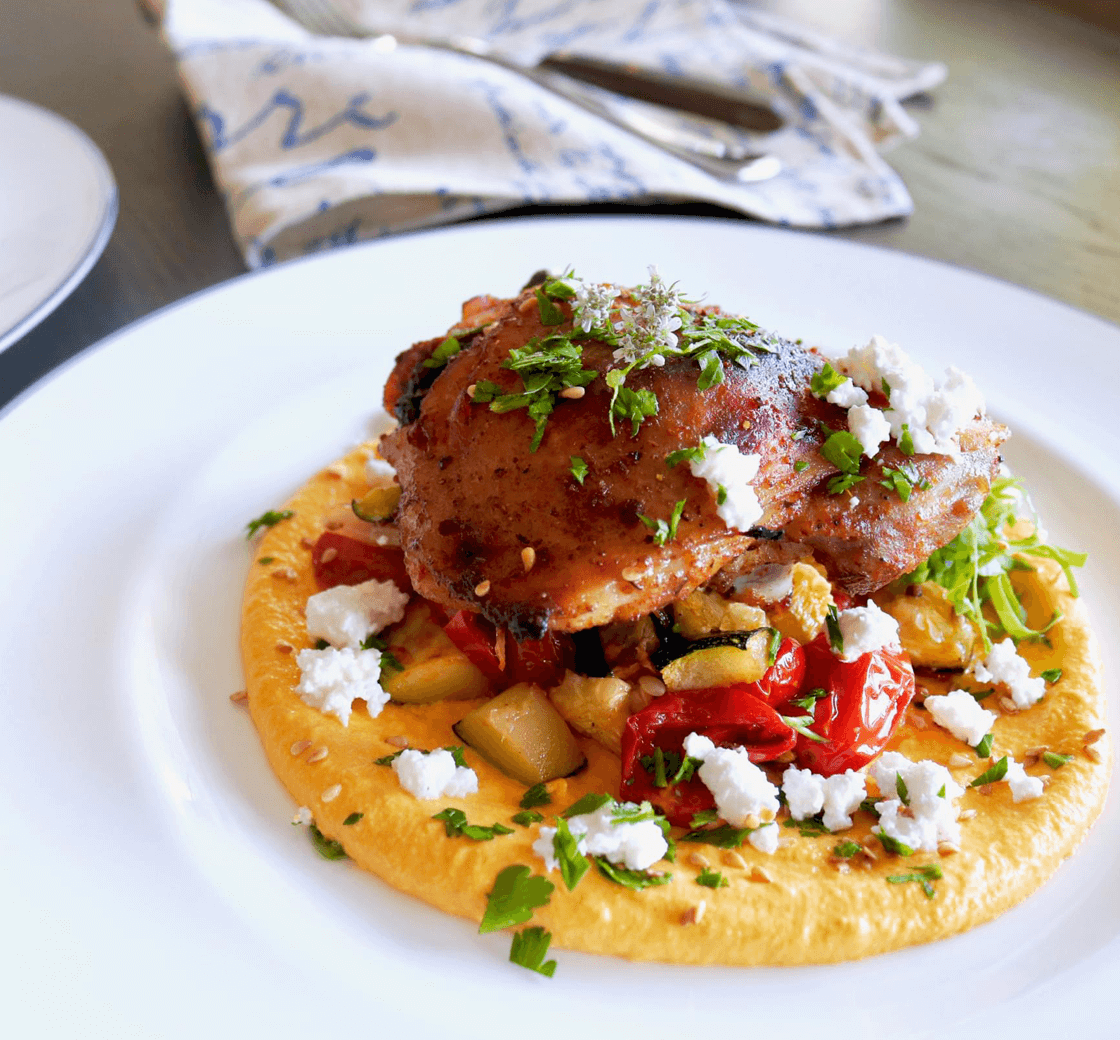
Although it contains vast areas of arid landscape, the Middle East is a fertile spot on the culinary map. Over the years, various empires have ruled the region's countries, leaving their imprint on the colorful, aromatic and diverse flavors. Recipes are dominated by spice blends, in-season vegetables and fruits, grains, olives and olive oil, nuts, herbs, and pickled and preserved foods. From Beirut, the “Paris of the Middle East,” to Jerusalem, considered the oldest city in the world, you will get a taste of the incredible culinary heritage with a magnificent vegetarian menu of hummus; tabbouleh; spicy falafel, tahini sauce; baba ghanoush and homemade pita.

You will work in teams to execute the class menu. At the end of class, participants gather to enjoy the food they have prepared. Wine is served with meals in most classes. All class menus are subject to change. While a snack platter is offered in both morning and evening classes, you may want to consider a light snack before joining us for class. Students are encouraged to bring a light lunch or dinner to all pastry classes.

You will work in teams to execute the class menu. At the end of class, participants gather to enjoy the food they have prepared. Wine is served with meals in most classes. All class menus are subject to change. While a snack platter is offered in both morning and evening classes, you may want to consider a light snack before joining us for class. Students are encouraged to bring a light lunch or dinner to all pastry classes.
From coasts to prairies, the diverse geography of America results in an abundance of meat and fish varieties that eventually end up on our plates, deliciously prepared. In this class, you will prepare dishes that celebrate this bounty and highlight famed regional preparations. On your menu: Chesapeake Bay crab cakes with sauce rémoulade; New York strip steak with onion rings; and broccoli-cauliflower gratin.
Discover the vibrant flavors of the Philippines in "Essentials of Filipino Cooking." This hands-on class teaches you to prepare iconic Filipino dishes cherished in homes across the archipelago. Master Chicken Adobo, with its savory-sour tang, and learn to make perfect Pancit noodles. You'll also prepare rich, vegetable-forward Pinakbet with Pork; creamy, coconut-infused Ginataang Kalabasa at Sitaw; and savory, citrusy Bistek Tagalog, all served with fluffy white rice. Gain essential skills and authentic ingredient insights – then bring the warmth and complexity of Filipino cuisine home to your kitchen.
Nothing beats the rich flavor and perfectly al dente texture of handmade pasta. So let's practice making our own pastas by hand and concoct some rich fillings, learning how to stuff ravioli, tortellini and cannelloni. As we make these three heavenly pastas, we'll complete them with homemade sauces that are the perfect complement to each shape and filling. You'll handcraft: lemon ricotta ravioli with sage brown butter, roasted red pepper tortellini in fra diavolo sauce, and beef angolotti in brodo.
Get ready to bake up a storm in this 3-hour class! You'll master classic American sweets that are perfect for any bake sale or after school treat. Learn to make vintage whoopie pies, ultra-delicious brownies, and amazing chocolate chip cookies. You'll also bake exquisite lemon bars from scratch. Leave with a box full of delicious creations and the skills to sweeten any occasion!
Ranked as America’s Best Culinary School (USAToday 2019), our roster of Chef-Instructors have run top kitchens around the globe.
| (Separate multiple addresses with commas like: john@aol.com, jane@aol.com) | |